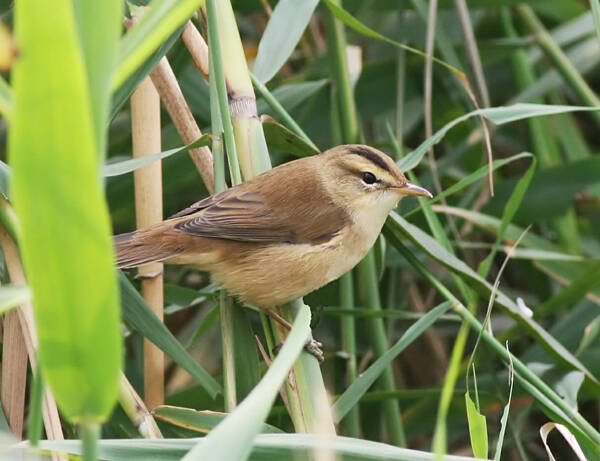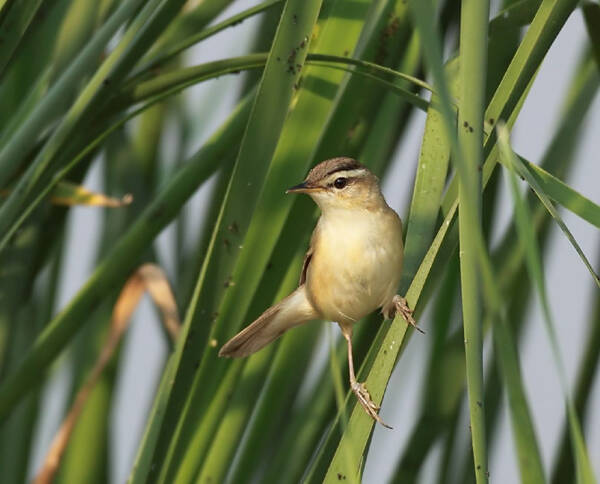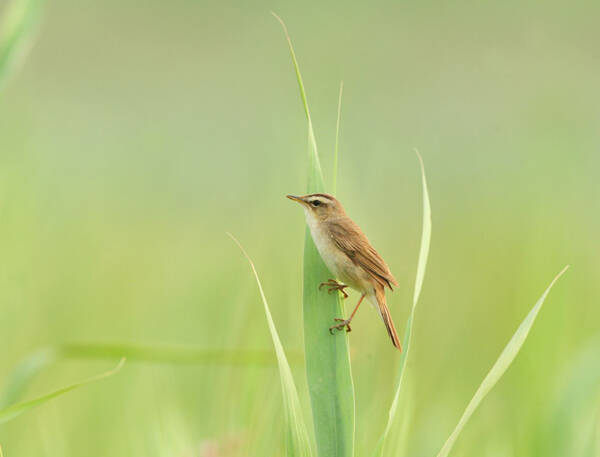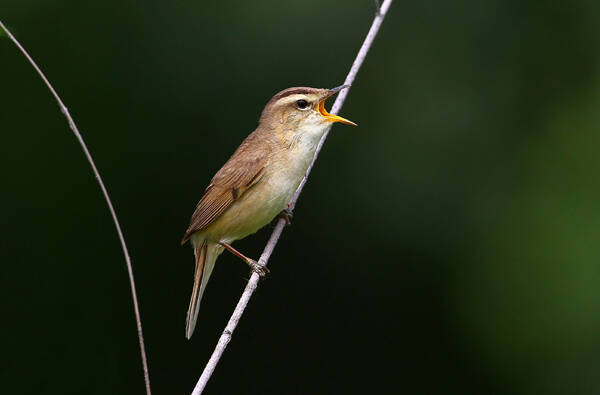Acrocephalus bistrigiceps
IUCN
LCBasic Information
Scientific classification
- name:Acrocephalus bistrigiceps
- Scientific Name:Acrocephalus bistrigiceps,Willow leaves, mouth lashes
- Outline:Songbird
- Family:Passeriformes Ornithogalidae R.Warbler
Vital signs
- length:11-13cm
- Weight:7-11g
- lifetime:
Feature
The eyebrow lines are light yellow with obvious dark brown vertical lines.
Distribution and Habitat
In China, it is distributed in Northeast China, North China, Central China and the entire eastern region, and some of them hibernate in South China. Abroad, it is found in Northeast Asia and Southeast Asia.
Black-browed reed warbler mainly inhabits the shore bushes and reeds of lakes, rivers, ponds, swamps and other water bodies in low mountains and hills below 900 meters above sea level and plains at the foot of the mountains. It especially likes to move in the grass and bushes near the water.
Appearance
The upper body is brown, with yellow-white eyebrows, thick black side crowns, and yellow skin on the lower body. The iris is olive brown, the upper beak is brown, the lower beak is light in color, the tip is black, and the feet are pink.
Details
The black-browed reed warbler often moves alone or in pairs. It is alert and agile. It can nimbly jump and shuttle between the stems and leaves of reeds, and can also stand upright on reeds or grass stems and climb up and down. Sometimes it flies back and forth between reeds and grass. It is constantly active most of the day.

During the breeding period, it often stands on the top of small shrubs or wormwood tips in open grasslands and sings. The sound is a short and urgent "chi, chi, chi..." sound that is repeated and varied, and is relatively noisy.

Mainly feed on insects and larvae of Coleoptera, Lepidoptera, Orthoptera, such as caterpillars and grasshoppers, and also eat other invertebrate foods such as locusts, beetles, spiders, etc.

The breeding season is generally from the end of May to the end of July. In late May, the testicles of male birds were collected and the swelling was about 5.3 mm; in early July, young birds that had just left the nest could be seen. Usually nests are built on bushes and reeds, and some nests are built on relatively high grass and shrubs. The height of the nest from the ground is 52.5-70 cm. The nest is cup-shaped, mainly composed of dry grass leaves and grass stems, with various animal hairs and bird feathers inside, and sometimes some soft plant roots and stems. The outer diameter of the nest is 6.5-7.2 cm, the inner diameter is 4.6-5.0 cm, the depth is 4.0-4.1 cm, and the height is 6.5 cm. One nest is bred per year, and 4-5 eggs are laid in each nest. The eggs are oval, gray-green, and covered with irregular gray-brown or dark green spots. The size of the eggs is 15.0-16.5 mm × 11.5-13.45 mm, and weighs 1.2-1.4 grams. After the last egg is laid, the incubation begins, and the incubation period is 14 days. The female bird is responsible for incubation. After the chicks hatch, both male and female parents participate in the brooding. After 11-12 days of feeding, the chicks can leave the nest and fly out.

This species has been included in the "National List of Terrestrial Wildlife with Important Economic and Scientific Research Values Protected by the State" issued by the State Forestry Administration of China on August 1, 2000.
Listed in the "Red List of Endangered Species of the World Conservation Union" (IUCN) 2017 ver 3.1-Least Concern (LC).








